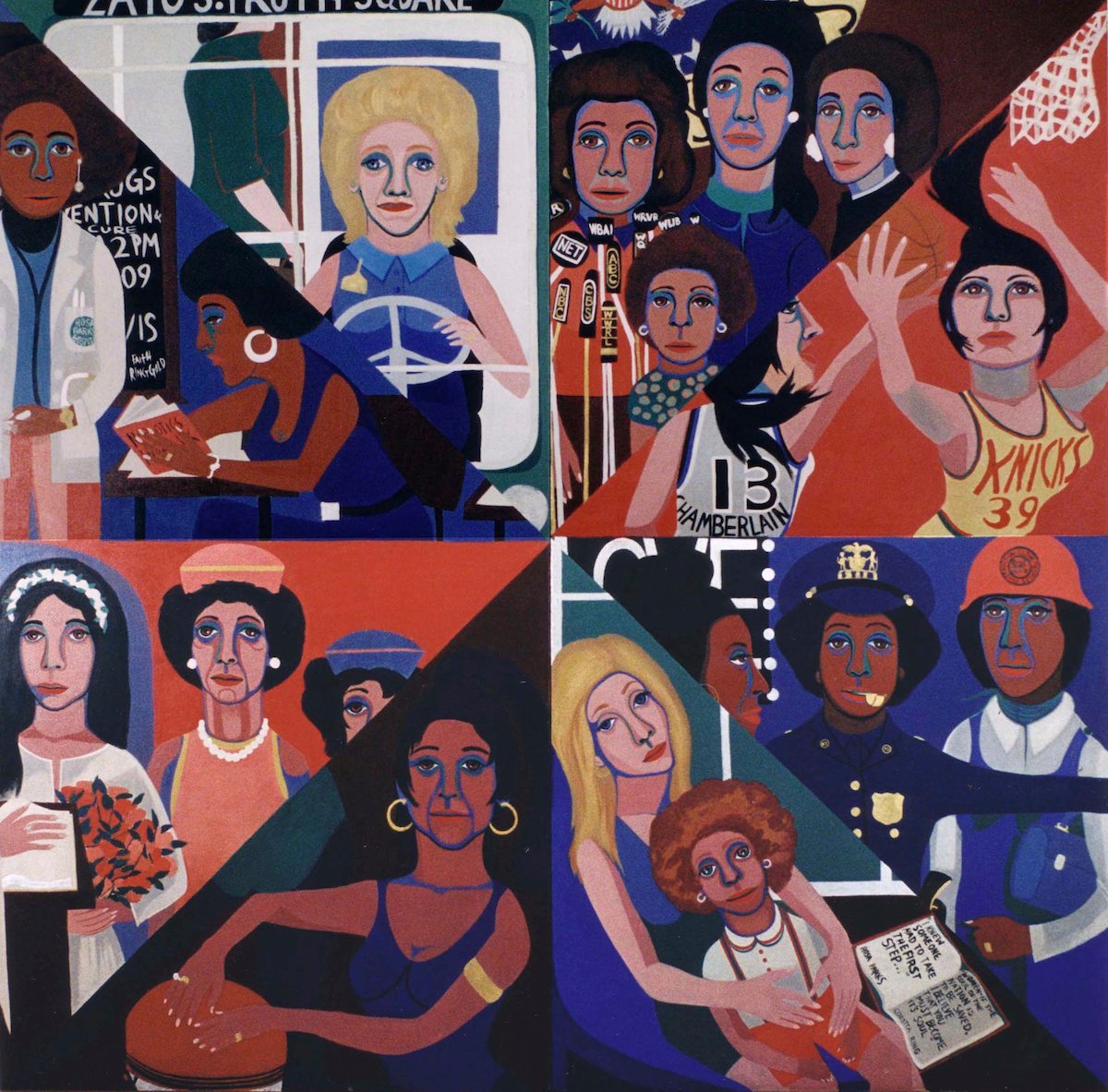
A treasured Faith Ringgold mural at Rikers Island prison will be relocated to the Brooklyn Museum.
The New York Public Design Commission made the decision today in a unanimous vote, effectively ending a public debate about the fate of the 50-year-old artwork, titled For the Women’s House, which was inspired by, and is dedicated to, the women incarcerated at the facility.
Commissioned for $3,000 in 1971 and completed the following year, the eight-foot-square mural depicts women performing various male-dominated jobs, including as a police officer and an NBA player. Ringgold, now 91, conceived of it as inspiration for inmates as they moved on from prison and rebuilt their lives.
However, after years of neglect at Rikers, many, including former New York Mayor Bill de Blasio and Ringgold herself, had pushed for the piece to be moved to a prominent public institution where it could be experienced by more people.
“[The] Brooklyn Museum is located in the Black community, and who goes to that museum? People of color, Black people, probably a lot of people who’ve been in prison or who have people in prison,” Michele Wallace, Ringgold’s daughter, told WNYC/Gothamist last month. “I used to live a few blocks from there—if there’s a People’s Museum in the city, that’s it.”
Kenseth Armstead, a commissioner who voted at today’s PDC meeting, prior to the vote. “I think it’s going to be a benefit that people know that [the] work is there and they can visit it for free if they want,” he said.
But not everyone is pleased about the decision.
“It is a shame that the Public Design Commission did not interrogate the serious concerns around lending public artwork to a private museum, especially an artwork specifically intended to serve people in jail,” said Todd Fine, a public art preservationist who argued against moving the mural at today’s vote, in an email to Artnet News. (In calling the Brooklyn Museum private, Fine is raising a technical distinction between the city-owned building and the private, non-profit museum it houses.)
Since its completion, Ringgold’s piece has been moved many times within Rikers. Currently, it hangs in a corridor at the Rose M. Singer Center, where it is only accessible to inmates who are being escorted from one part of the facility. It is covered by a thick plexiglass, which was put in place after the artwork suffered damages over the years.
The most egregious of those instances occurred in 1988, when prison staff whitewashed the mural after having deemed it inappropriate for the incoming male inmates. A guard later removed and restored the painting, then reinstalled it at the Singer Center.
Still owned by the city, For the Women’s House will head to the Brooklyn Museum on a long-term loan. But first it will have a four-month stop at the New Museum, as part of Ringgold’s upcoming retrospective there.